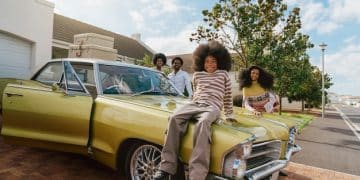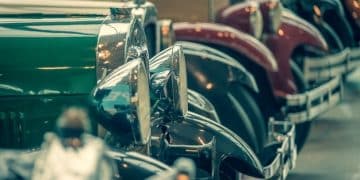The Evolution of Car Shows: A Journey Through Automotive Culture
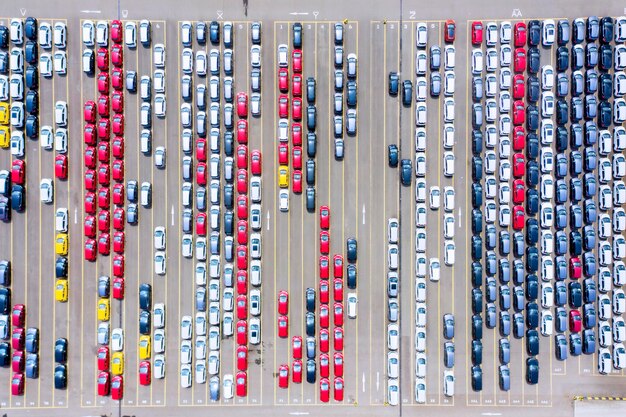
The evolution of car shows showcases a remarkable journey from intimate local gatherings to grand national spectacles, reflecting the dynamic shifts in automotive culture, technology, and consumer interests over the decades.
The world of car shows has transformed dramatically over the years. From humble beginnings as local gatherings to showcase prized possessions, these events have grown into elaborate national spectacles, attracting enthusiasts, manufacturers, and vendors from far and wide. The evolution of car shows: From local gatherings to national spectacles mirrors the broader changes in automotive technology, culture, and the way we interact with our vehicles.
The Early Days: Local Car Meets
In their nascent form, car shows were simple affairs. They were community-driven events, often held in local parks or fairgrounds. These gatherings were less about competition and more about camaraderie, where car enthusiasts could share their passion and pride in their vehicles.
Grassroots Beginnings
The earliest car shows were informal and intimate. They were characterized by a relaxed atmosphere, where owners proudly displayed their vehicles and swapped stories. These events were primarily social, fostering a sense of community among car lovers.
These early shows allowed people to showcase their vehicles, often without any formal judging or prizes. The focus was on the joy of sharing a common interest and admiring the craftsmanship and uniqueness of each car. This laid the groundwork for the more structured events that would follow.
Key Features of Early Car Shows
Early car shows had distinct characteristics that set them apart from today’s large-scale events. They were smaller, simpler, and more focused on the personal connection between owners and their cars.
- Intimate gatherings focused on community interaction.
- Informal displays with minimal judging or competition.
- Emphasis on sharing stories and personal connections with vehicles.
- Local venues such as parks, fairgrounds, and community centers.
The shift from these local meets to national spectacles represents a significant transformation. As car culture expanded and evolved, so did the scale and complexity of car shows, reflecting changing tastes and technological advancements.
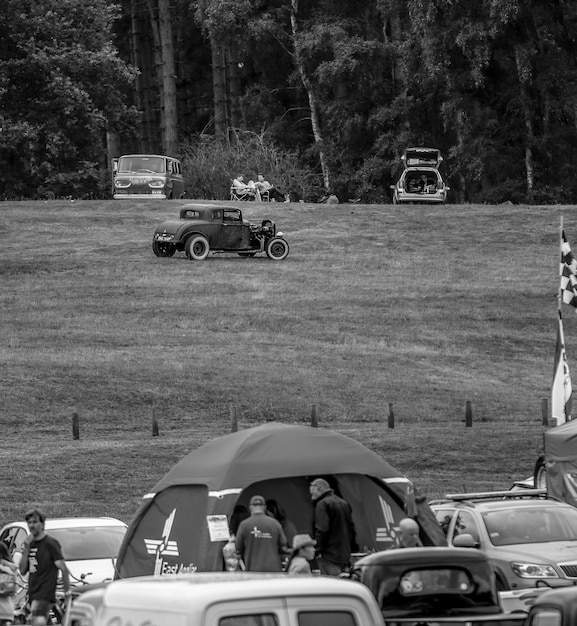
The Rise of Organized Car Clubs and Events
As car enthusiasm grew, so did the need for more structured and organized events. Car clubs emerged, providing a framework for enthusiasts to connect, share knowledge, and organize larger and more formal car shows.
The Role of Car Clubs
Car clubs played a crucial role in shaping the car show landscape. They brought structure and organization to what had previously been informal gatherings. These clubs established rules, judging criteria, and event formats, helping to elevate the overall quality and appeal of car shows.
Car clubs also helped to promote and publicize car shows, attracting more participants and spectators. These clubs often focused on specific makes or models, creating niche events that catered to dedicated enthusiasts. Their efforts transformed car shows from casual meetups to organized showcases.
Early Examples of Organized Car Shows
The mid-20th century saw the emergence of several influential car shows that helped to define the modern car show format. These events were characterized by increased organization, competitive judging, and broader appeal.
- Introduction of formal judging and award systems.
- Increase in participation and spectator attendance.
- Emergence of specialized car clubs focused on specific vehicle types.
- Development of consistent event formats and standards.
The rise of organized car shows and car clubs marked a turning point in the evolution. These developments laid the groundwork for the larger, more commercial events that would later dominate the car show industry.
The Influence of Customization and Hot Rod Culture
The post-World War II era witnessed a surge in customization and hot rod culture. This phenomenon significantly impacted car shows, as enthusiasts eagerly displayed their uniquely modified vehicles.
The Hot Rod Revolution
The hot rod movement was all about pushing the boundaries of automotive performance and aesthetics. Enthusiasts modified their cars for speed and style, creating unique machines that reflected their individual tastes. Car shows provided a platform for hot rodders to showcase their creativity and engineering prowess.
Hot rod shows became a significant part of the car show scene. These events celebrated innovation and individuality, featuring custom paint jobs, engine modifications, and bodywork. The hot rod culture injected a sense of excitement and rebellion into the world of car shows.
Customization Trends and Car Shows
Customization trends have continued to evolve, influenced by various subcultures and technologies. Car shows have mirrored these trends, with builders constantly pushing the limits of what is possible.
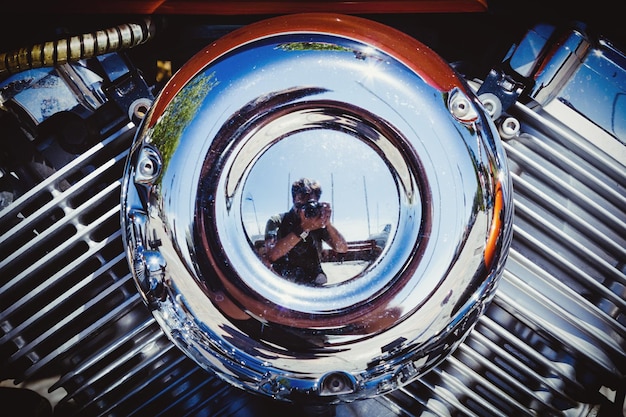
- Expansion of customization categories, including lowriders, rat rods, and tuner cars.
- Integration of new technologies, such as air suspension and advanced engine management systems.
- Influence of popular culture, including movies, music, and fashion.
- Growth of professional custom car builders and shops.
The Influence of customization and hot rod cultures brought a new dimension to car shows. They have transformed from simple gatherings into hubs of creativity, innovation, and self-expression.
The Introduction of Corporate Sponsorships and Auto Manufacturers
As car shows grew in popularity, they began to attract the attention of corporate sponsors and auto manufacturers. Their involvement brought increased financial resources, marketing expertise, and professionalism to the car show scene.
The Role of Corporate Sponsors
Corporate sponsorships played a crucial role in elevating car shows. Sponsors provided funding for venues, advertising, and prizes, allowing events to grow in scale and appeal. Sponsorships also legitimimed car shows as significant marketing opportunities.
Corporate sponsors brought new levels of sophistication and organization. They helped car shows to attract larger crowds, secure better locations, and improve the overall experience for participants and spectators. This commercialization transformed car shows into major entertainment events.
Auto Manufacturers’ Involvement
Auto manufacturers’ participation in car shows brought several benefits. Manufacturers showcased their latest models, gathered feedback from enthusiasts, and built brand awareness. Their presence added credibility, attracting more consumers and media attention.
Auto manufacturers’ involvement has transformed car shows as valuable marketing platforms. They invest heavily in displays, demonstrations, and interactive experiences, turning car shows into immersive brand showcases. This integration of manufacturers has made the landscape more diverse and competitive.
The Rise of National and International Car Shows
With the support of sponsors and manufacturers, car shows expanded beyond local and regional events, evolving into national and international spectacles. These large-scale events attract enthusiasts from all over the world.
Key Examples of Prominent Car Shows
Several major car shows have emerged as leaders in the industry. These events set the standard for quality, innovation, and attendance, attracting thousands of visitors and participants each year.
- Increased attendance from diverse audiences and geographic locations.
- Expanded media coverage, including television, print, and online news outlets.
- Greater financial investment from sponsors and exhibitors.
- More professional organization and management.
The growth of national and international car shows represents the peak of evolution. These events have become cultural phenomena, attracting enthusiasts, industry professionals, and media from around the globe.
Features of Modern Car Shows
Modern car shows are elaborate affairs, featuring interactive displays, live entertainment, and celebrity appearances. These events offer a comprehensive experience that goes beyond simply displaying cars.
Modern car shows feature technology, entertainment and exclusive access. These elements serve to appeal to evolving demands, thus ensuring continued relevancy in a digital age.
The Future of Car Shows: Technology and Community Engagement
As technology continues to advance, car shows must adapt and evolve to remain relevant. The future of car shows will likely involve greater integration of technology and a renewed focus on community engagement.
The Role of Technology
Technology will play a key role in shaping the future of car shows. Virtual reality, augmented reality, and online platforms can enhance the car show experience and reach a wider audience.
Enhancing Community Engagement
Community engagement will be crucial for the long-term success of car shows. Events that foster a sense of community and provide opportunities for interaction and learning will thrive.
Focusing on car meets and interactive installations will enhance community engagement. This provides attendees valuable experiences to enjoy and remember, fostering a community-driven experience.
| Key Point | Brief Description |
|---|---|
| 🚗 Local Meets | Small, community-driven events focused on camaraderie. |
| 🛠️ Customization | Hot rod culture influenced shows with unique vehicle modifications. |
| 🏢 Sponsorship | Corporate sponsorships and auto manufacturers enhanced shows. |
| 🌐 National Events | Large-scale events attracting global enthusiasts. |
FAQ
▼
Early car shows were community-focused events, often held in local parks. They emphasized camaraderie and sharing a passion for cars rather than competition.
▼
Car clubs brought organization and structure to the shows. They helped arrange different elements such as event promotion, consistent formats and standards as well as establishing rules and judging criteria.
▼
Hot rod culture introduced customization. This lead to shows featuring creativity, especially in custom paint, engines and bodywork.
▼
Corporate sponsorships brought in financial resources, greater reach in marketing and high levels of expertise. These elements resulted in attracting larger crowds.
▼
We can expect innovation as greater integration of technology. These elements serve to enhance the experience, increase reach, and also community involvement.
Conclusion
From humble beginnings to grand spectacles, the evolution of car shows reflects the dynamic nature of automotive culture. By embracing technology and fostering community engagement, car shows can continue to thrive and evolve, ensuring their relevance for generations to come.

